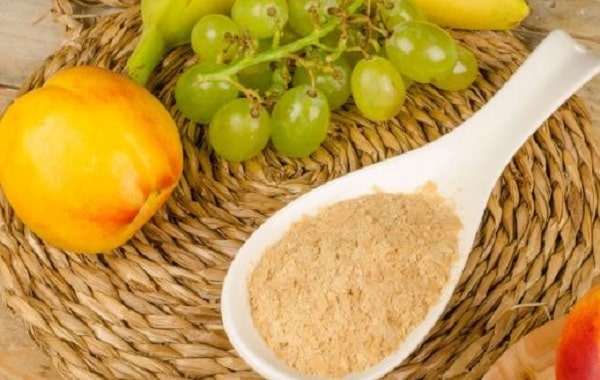The word yeast with Indo-European roots means boil or bubble. Pasteur showed that the addition of oxygen bubbles to the liquid yeast medium increases cell growth. But fermentation is inhibited. This observation was later referred to as the Pasteur effect.
Yeasts use organic compounds as an energy source and do not need sunlight to grow. The carbon required for yeasts is obtained from hexose sugars such as glucose, fructose or disaccharides such as sucrose and maltose.
History of yeast
Some yeast species can also metabolize pentose sugars, alcohols, and organic acids. Yeasts need oxygen for cellular respiration, and unlike bacteria, no yeast has been identified that is anaerobic. Yeasts grow best in neutral or low acid environments.
They also vary greatly in what temperature range they grow best. For example, one species of yeast grows optimally at 20 to -2 degrees Celsius, and another at 5 to 35 -5 degrees Celsius. Cyclohexyl amide is an antibiotic that is sometimes added to the yeast growth medium to inhibit the growth of Saccharomyces cerevisiae and select wild species.

Types of yeast
A) Compressed or wet yeast
This type, which is obtained by filtering the yeast solution, has a moisture content of between 70 and 75%. This type should be kept at temperatures between 1 and 5 ° C during storage and transportation, and there should be adequate ventilation to remove heat from yeast respiration and maintain the above temperature.
B) Dry yeast
This type is produced both instantly and normally and its humidity is between 3 to 18%. Ordinary dry yeast used in the preparation of dough should be prepared and activated before adding to other raw materials. The yeast is mixed with some of the water used to make the dough, and a little sugar and flour, and left for 15 minutes at a temperature between 35 and 40 degrees Celsius before being added to the dough.
Instant dry yeast, unlike ordinary dry yeast, does not require preparation and activation and can be added directly to the dough in powder form. Dry yeasts are small in size and contain emulsifiers and should be stored in a cool, dry place. If dry yeast is opened and part of it is used, the lid should be closed again to prevent contact with air. Dry packaging increases the shelf life of dry yeast if vacuum packed.
C) Liquid yeast
This type is actually a dilute solution of yeast cells in water and seven liters is equivalent to one kilogram of compressed or moist yeast. This type is suitable for large industrial units in that the yeast cargo is transported into the mixer by a pump. During transportation by tankers, the yeast solution is constantly stirred to maintain its temperature at 3 ° C.
It should be noted that yeast can be added to flour during dough preparation, but should not be added directly to other dry materials such as salt and sugar, because in this case it reduces the power of gas production by i
Yeast reproduction
Yeasts usually reproduce by germination. In this phenomenon, the bud is formed on the outer surface of the mother cell and as it elongates, the nucleus of the mother cell divides and one of the resulting nuclei migrates without germination. The cell wall material then forms between the bud and the mother cell, and eventually the bud separates from the mother cell. A yeast cell may produce up to 24 buds by germination.
In some cases, the yeast cells grow by splitting the stem cell. This means that the mother cell is elongated, its nucleus is divided, two cells are formed. Increasing the number of yeast cells on the hard environment creates a bacterial colony
Yeast growth and activity
Yeasts can grow voluntarily under anaerobic conditions. This means that they use oxygen or organic compounds as the final acceptor of electrons. In a high-oxygen environment, yeasts ferment sugars to produce ethanol and carbon dioxide. This process is the basis of the alcoholic and confectionery industries. Some species of Saccharomyces cerevisiae, such as Saccharomyces cerevisiae, are used to make ethanol and carbon dioxide to make bread dough.

Application of yeast
Useful physiological properties of yeasts have been used in various fields of biotechnology. Fermentation of sugars by yeast is one of the oldest and largest applications of this organism in technology. Many types of yeast are used in food preparation, bread making, beer and..
Food industry
Bread yeasts and barley yeasts differ in how they work, so that bread yeasts are generally more aggressive and ferment in the shortest possible time, although barley yeasts are more active and their end product is odorless. To make bread, yeast is mixed with white flour. The fermentation process begins. As a result, due to the pressure of carbon dioxide, the bread becomes swollen and spongy
Ethanol production industry
The ability of yeast to convert sugars to ethanol is important in the biotechnology industry for fuel production. To break the bond of complex sugars and turn them into simple sugars. After this step, yeasts are added to convert simple sugars to ethanol. Ethanol reaches a purity of 96% after distillation.
Saccharomyces yeasts are also used to ferment xylose (one of the fermentable sugars found in agricultural residues, waste paper and wood chips). Therefore, ethanol production from these inexpensive raw materials can be competitively priced with fuels such as gasoline.
medical
Yeasts lower cholesterol and triglyceride levels in human immunodeficiency virus diseases.

Utjyhr Cephalexin For Use In Dogs [url=https://newfasttadalafil.com/]Cialis[/url] Buy Now Tab Isotretinoin Isotret Mastercard Cod Cialis Ampicillin 500 Zmasmt Xfmwpp cialis 36 hr 20 mg https://newfasttadalafil.com/ – 36 hour cialis online